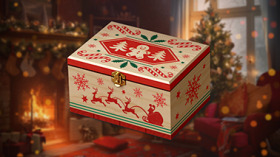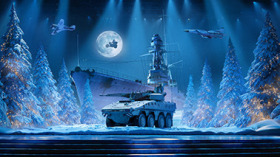
- Для PC
- Для Mac
- Для Linux
- ОС: Windows 10 (64 bit)
- Процессор: Dual-Core 2.2 GHz
- Оперативная память: 4 ГБ
- Видеокарта с поддержкой DirectX версии 11: AMD Radeon 77XX / NVIDIA GeForce GTX 660. Минимальное поддерживаемое разрешение – 720p.
- Сеть: Широкополосное подключение к Интернету
- Место на жестком диске: 23.1 Гб
- ОС: Windows 10/11 (64bit)
- Процессор: Intel Core i5 или Ryzen 5 3600 и выше
- Оперативная память: 16 ГБ
- Видеокарта с поддержкой DirectX 11 и выше: Nvidia GeForce 1060 и выше, Radeon RX 570 и выше
- Сеть: Широкополосное подключение к Интернету
- Место на жестком диске: 75.9 Гб
- Операционная система: Mac OS Big Sur 11.0
- Процессор: Core i5, минимум 2.2GHz (Intel Xeon не поддерживается)
- Оперативная память: 6 Гб
- Видеокарта: Intel Iris Pro 5200 (Mac) или аналогичная видеокарта AMD/Nvidia для Mac (минимальное поддерживаемое разрешение – 720p) с поддержкой Metal
- Место на жестком диске: 23.1 Гб
- Операционная система: Mac OS Big Sur 11.0
- Процессор: Intel Core i7 (Intel Xeon не поддерживается)
- Оперативная память: 8 Гб
- Видеокарта: Radeon Vega II и выше с поддержкой Metal
- Место на жестком диске: 75.9 Гб
- Операционная система: Современные дистрибутивы Linux 64bit
- Процессор: Dual-Core 2.4 ГГц
- Оперативная память: 4 Гб
- Видеокарта: NVIDIA GeForce 660 со свежими проприетарными драйверами (не старее 6 месяцев) / соответствующая серия AMD Radeon со свежими проприетарными драйверами (не старее 6 месяцев, минимальное поддерживаемое разрешение - 720p) с поддержкой Vulkan
- Место на жестком диске: 23.1 Гб
- Операционная система: Ubuntu 20.04 64bit
- Процессор: Intel Core i7
- Оперативная память: 16 Гб
- Видеокарта: NVIDIA GeForce 1060 со свежими проприетарными драйверами (не старее 6 месяцев) / Radeon RX 570 со свежими проприетарными драйверами (не старее 6 месяцев) с поддержкой Vulkan
- Место на жестком диске: 75.9 Гб
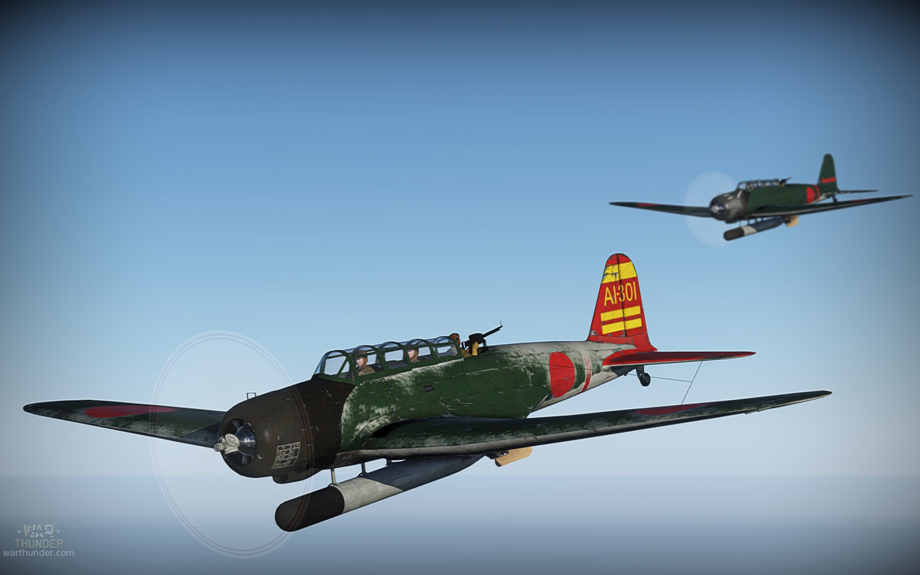
B5N2 aircraft Flown by 1st wave Air Strike Leader Lt. Cdr. Mitsuo Fuchida, camouflage by cambridge79 | Download here!
From 8th December 12:00 GMT to 9th December 12:00GMT earn 20% more 
in Attack on Pearl Harbor (RB) event!
In 1941 the Japanese Empire was engaged in heavy fighting. After the attack on mainland China in 1937, the Japanese Army was in control of cities such as Shanghai and Nanking, however it was still engaged in combat with both the forces of the Kuomintang and the Chinese Communists. Wanting to cut off the supply lines for the Kuomintang, the Japanese decided to occupy French Indochina which they succeeded in doing in 1940. In response to Japanese atrocities in China and the occupation of French Indochina, both the British and the Americans placed an embargo on Japan which made it impossible for the Japanese to import any goods. One of those resources – oil – was of crucial importance for the Japanese Navy – the oil reserve was then estimated for only 1 year. Not wanting to lose face, the Japanese militarists understood that the only way out of this situation was a war with both Western powers.
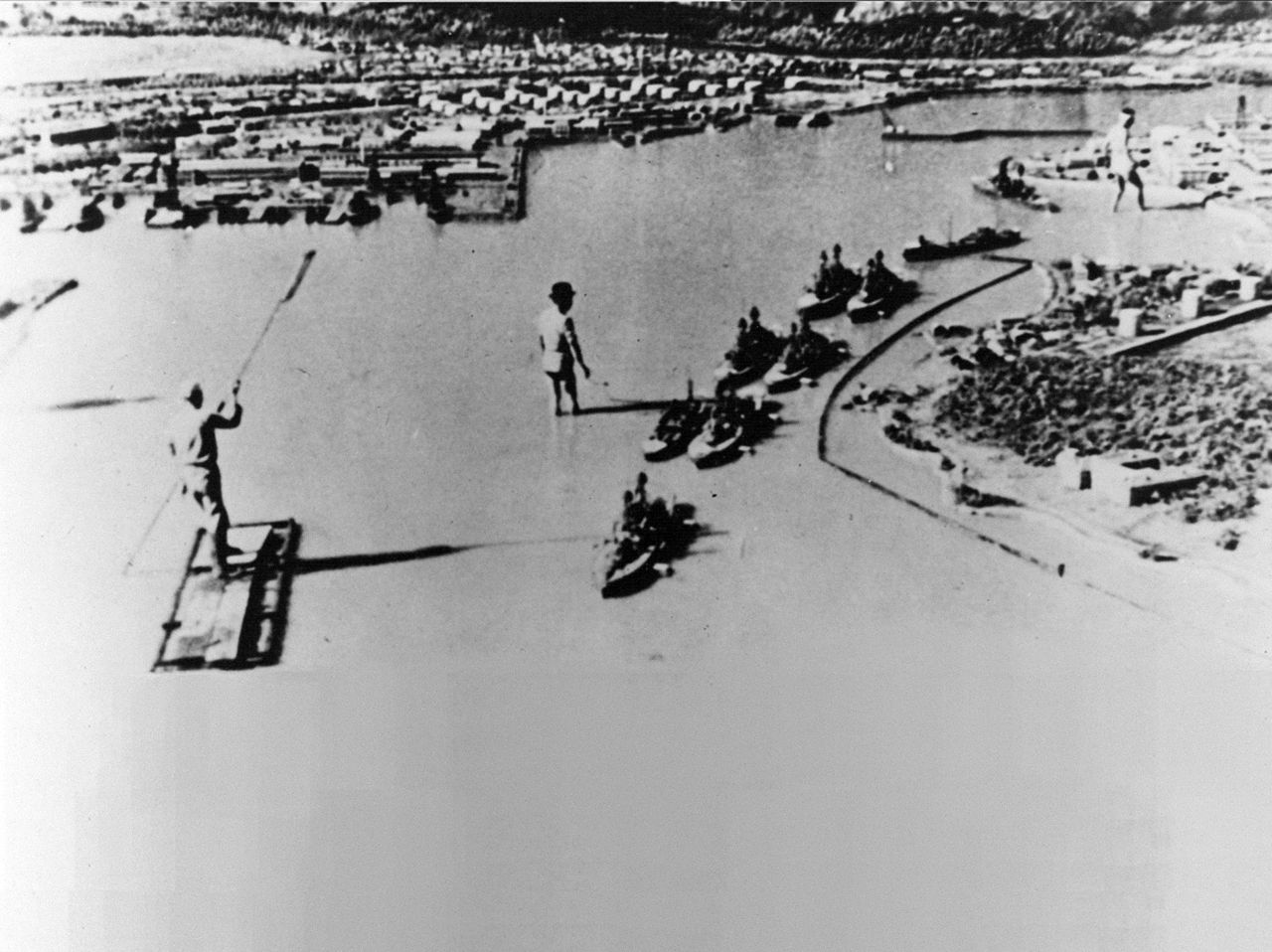 |
| View of a mock-up of Pearl Harbor, constructed in Japan in 1941 to help plan the attack on the installation |
Tasked with planning the attack was the American educated Admiral Isoroku Yamamoto, the commander of the Japanese Combined Fleet. Along with him the planning staff included Rear Admiral Ryunosuke Kusaka and Captain Minoru Genda. The whole planning staff took inspiration for the attack from the successful British raid on Taranto. Overall, the attack on Pearl Harbor would be only one part of a huge Japanese offensive in Southeast Asia. Next to the attack on the Pacific Fleet, the Japanese were to attack and capture the Malayas, Singapore, Hong Kong, the Philippines and the Dutch East Indies. The intel for the Pearl Harbor attack was mainly provided by the Japanese consul in Honolulu. After long preparations the Japanese carrier armada, under the command of Admiral Chuichi Nagumo, set sail from Japan on 26th November 1941.
The US were at the time considering the possibility of a Japanese strike. However, most planners and intelligence officers believed that the Japanese would focus on the Philippines and the Malayas and would not try to attack targets in Hawaii and on the US West Coast. Because of that, Pearl Harbor military personnel was not put on high alert. At the time of the attack most ships were mainly crewed by skeleton crews and the aircraft on the airfields of the island were set in rows on the aprons to guard against sabotage.
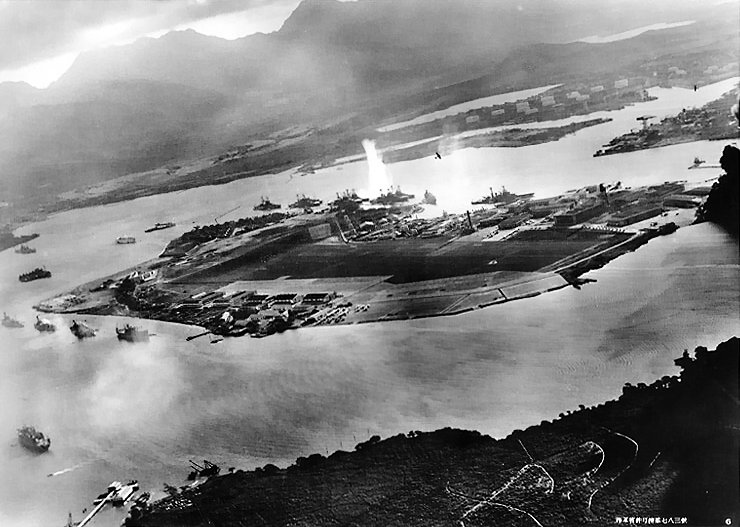 |
| Photograph taken from a Japanese plane during the torpedo attack on ships |
On the morning of 7th December, the Japanese carrier group was in range to carry out the attack. The aircrews began to climb into their aircraft which would form the first wave. These aircraft were to attack Battleship Row in the port as well as airbases at Hickam Field, Wheeler Field, Ford Island, Barber's Point and Kaneohe. Overall 177 planes, commanded by Commander Mitsuo Fuchida, took to the skies. As they approached the island they were picked up by the newly installed American radar station at Opana Point. However, the headquarters mistook them for a training flight of six B-17 bombers.
At 7:49, Fuchida transmitted the radio message: “Tora, Tora, Tora”, which meant complete surprise. The dive bombers and torpedo bombers began descending to attack, as fighters converged to attack the US aircraft on the airfields. The first victim of the attack was battleship USS Oklahoma, which was hit by multiple torpedoes and capsized in the port. The port was also shaken by a gigantic explosion, when a Japanese bomb exploded in the forward ammunition magazine of battleship USS Arizona, causing it to sink. Meanwhile, the battleship USS Nevada managed to get underway – it was hit multiple times, but it was able to beach itself at Hospital Point. The Japanese fighters and dive bombers wreaked havoc at the US airbases, destroying dozens of US aircraft on the ground. Only a handful of US fighters managed to take off and combat the Japanese attackers.
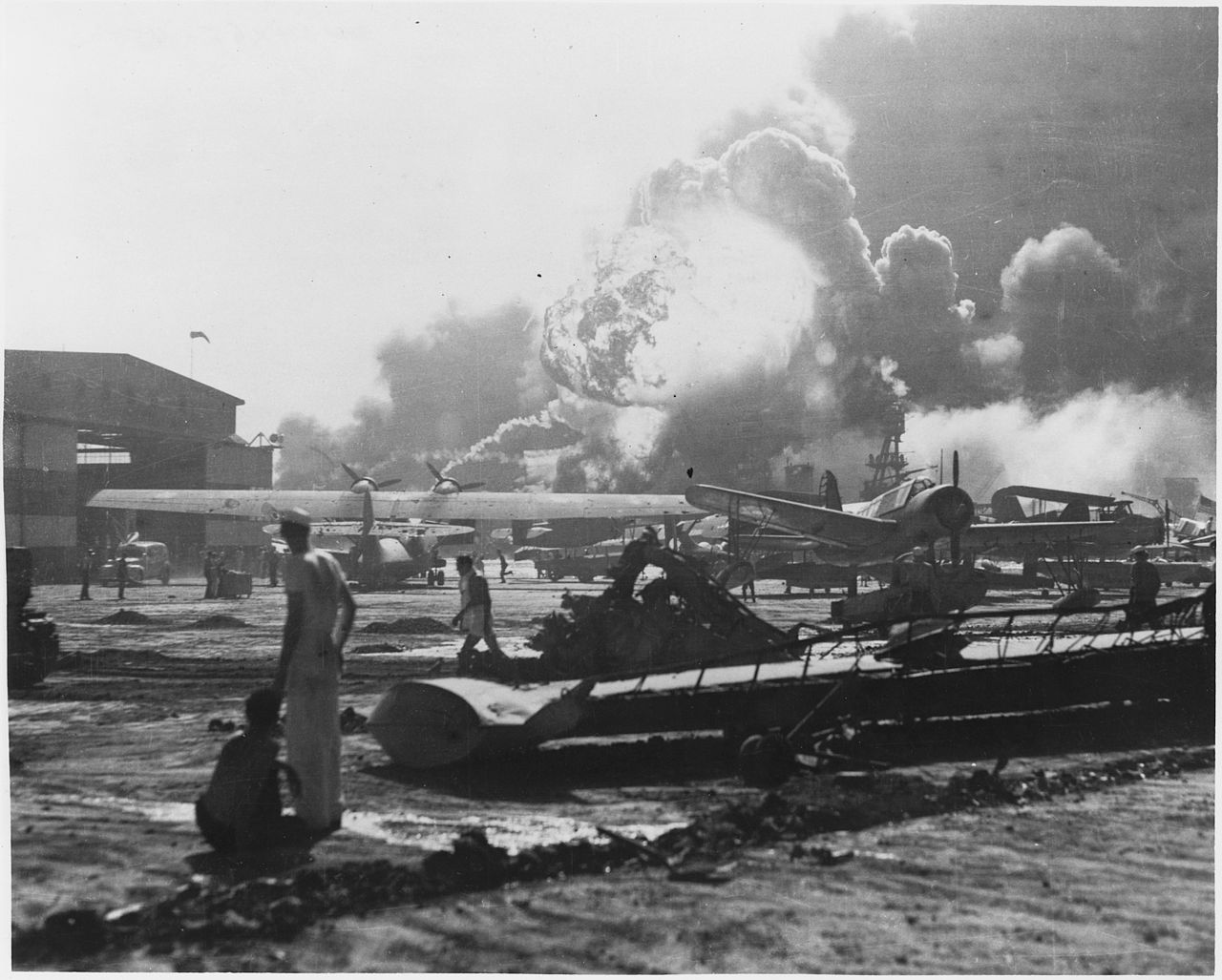 |
| Damage at Pearl Harbor, Hawaii from Japanese attack |
The second wave of the attack focused mainly on attacking the airfields. It was however met with fierce AA fire as the Americans have recovered from initial attack . After the second wave returned to the carriers Admiral Chuichi Nagumo decided to fall back. While the Combined Fleet began to withdraw the Japanese offensive in Southeast Asia was already underway. What was interesting was the fact that many Japanese pilots felt that the attack without a declaration of war preceding it was dishonorable.
The US Navy and the US Army Air Corps had suffered serious losses – two active battleships (Arizona, Oklahoma) were totally lost, the remaining six (Nevada, West Virginia, California, Tennessee, Maryland, Pennsylvania) were out of action for months for repairs. Other losses included numerous other warships damaged, 188 aircraft destroyed, with over 2000 dead and 1000 wounded. The Japanese lost 5 midget submarines and 29 aircraft with 63 casualties and 1 POW. However, the Japanese attack in the long run turned out to be unsuccessful. The Japanese bombers did not manage to destroy any harbor infrastructure, including submarine pens and fuel supplies, which meant that the base was still functional. Moreover, during the attack the US aircraft carriers were not in the harbor, which meant that they avoided damage or destruction. Also, the US Navy could still count on 13 combat ready battleships at the time, with most of the damaged ships being repaired during the course of the war. The attack on Pearl Harbor also succeeded in drawing the United States into a war with Japan – a war that Japan was not able to win.
Author: Adam “BONKERS” Lisiewicz
Attack on Pearl Harbor recreated in War Thunder by Cheezfriend
 &
& 